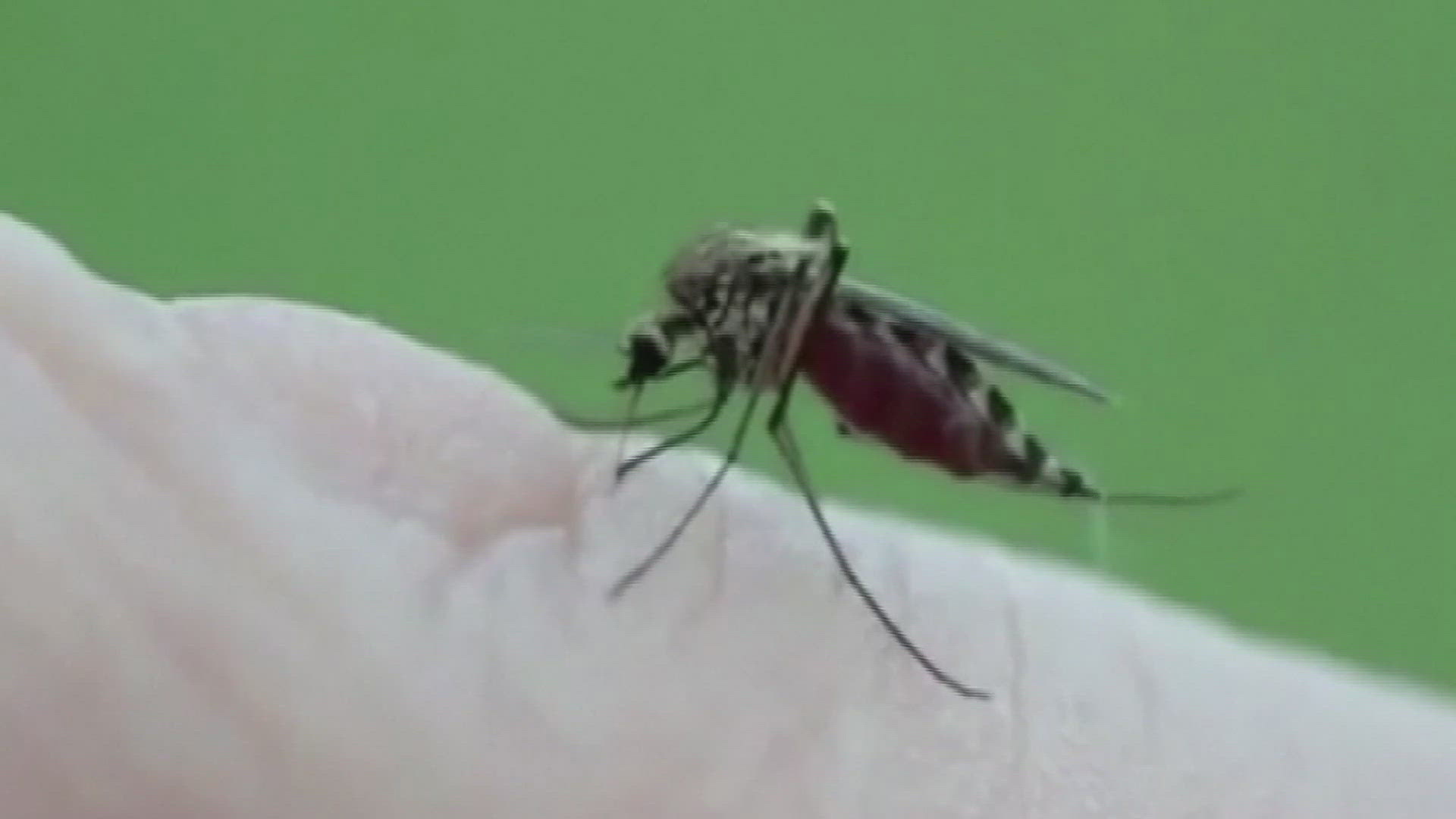AUSTIN, Texas — Standing in front of any store's summer bug spray display, you'll see a lot of options – some that contain DEET and others that proudly proclaim they are DEET-free.
When it comes to keeping yourself safe from bug bites, health experts agree: DEET is the way to go. But despite that consensus, some consumer concern remains. Some wonder just how safe the chemical actually is and whether or not they should use it to protect themselves.
With all the questions around DEET, we're taking a look at the answers.
What exactly is DEET?
N,N-diethyl-meta-toluamide, more commonly known as DEET, is the active ingredient in many insect repellants and is widely used to protect people from biting pests like mosquitos and ticks.
According to the Environmental Protection Agency (EPA), DEET is designed for direct application to people's skin to repel insects. DEET doesn't kill biting bugs, but rather makes it hard for them to smell humans.
The EPA reports that, "After it was developed by the U.S. Army in 1946, DEET was registered for use by the general public in 1957. Approximately 120 products containing DEET are currently registered with EPA by about 30 different companies."
Is DEET safe to use?
Studies show DEET is quite safe if used as directed. In a 2014 safety review of DEET, the EPA didn't identify any risks to human health, non-target species or the environment.
"We continue to believe that the normal use of DEET does not present a health concern to the general population, including children," the EPA writes. "Currently registered uses of DEET are also not expected to result in adverse effects for listed and non-listed endangered species, or critical habitat."
RELATED: Best insect repellents of 2024
Does DEET pose special risks to anyone?
DEET is a chemical, so it's possible for some people to have an adverse reaction to it. The Cleveland Clinic reports that some people experience rashes or irritated skin after using DEET, and DEET can irritate eyes if sprayed too close to them.
There have also been rare reports of seizures associated with DEET, but the National Pesticide Information Center says most of those cases were the result of people drinking products with DEET or otherwise using DEET products in unsafe ways.
As for non-humans, the center said reports of pets being exposed to DEET in amounts that would make them sick are rare. However, pets that have been overexposed to the chemical have shown varying effects, including shaking, excitement, lack of coordination, vomiting and seizures.
Is DEET safe to use on kids?
According to the EPA, DEET is approved for use on children with no age restriction and no restriction on the percentage of DEET in the product.
The EPA recommends that children not be allowed to handle any insect repellants themselves and that bug sprays shouldn't be applied to children's hands, as they tend to put their hands near their eyes and mouths. The EPA also recommends that after returning indoors, parents should wash their children's treated hands and clothes with soap and water or give them a bath.
How to use DEET safely
According to the EPA, all DEET product labels include the following directions:
- Read and follow all directions and precautions on this product label
- Do not apply over cuts, wounds, or irritated skin
- Do not apply to hands or near eyes and mouth of young children
- Do not allow young children to apply this product
- Use just enough repellent to cover exposed skin and/or clothing
- Do not use under clothing
- Avoid over-application of this product
- After returning indoors, wash treated skin with soap and water
- Wash treated clothing before wearing it again
- Use of this product may cause skin reactions in rare cases
If you're using an aerosol product or one with a pump spray, it's also recommended that you don't spray them in enclosed areas. And for facial application, you should spray repellant on your hands first, then rub it on your face, instead of spraying directly onto your face.
The Cleveland Clinic adds that higher concentrations of DEET don't work better – they just last longer. For shorter amounts of time outside, products with lower DEET concentrations should be fine. Products with 10% DEET should repel biting bugs for about two hours, while those with concentrations of 20% to 30% last around five hours.
The clinic also notes that "unless you're out all day in a bug-infested forest," you probably don't need to re-apply DEET. It also recommends avoiding bug spray/sunscreen combination products.
What if you do have a bad reaction to DEET?
If you suspect you or your child is having an adverse reaction to DEET, the EPA says you should stop using the product, wash treated skin and call your local poison control center or doctor for help. If you go to a doctor, take the bug spray with you.
Alternatives to DEET
If you'd still rather not use an insect repellant that contains DEET, there are some alternatives.
Picaridin
According to the National Pesticide Information Center, picaridin is a synthetic compound first made in the 1980s that repels biting insects. It was made to resemble piperine, a natural compound found in the plants that produce black pepper.
Picaridin has been widely used as a bug spray in Europe and Australia, but it has only been available in the U.S. for a little less than a decade. The EPA lists it as an active ingredient in EPA-registered, skin-applied insect repellants.
Oil of Lemon Eucalyptus (OLE)
OLE is a natural insect repellant that some choose to use to keep bugs at bay. The EPA notes that product labels show some OLE products shouldn't be used on children younger than three. But for everyone else, when used as directed, it's considered safe.

